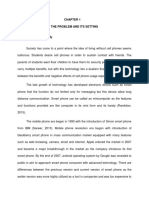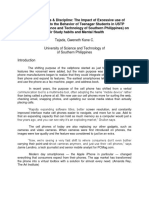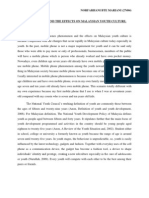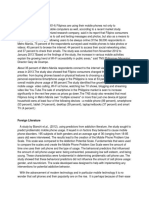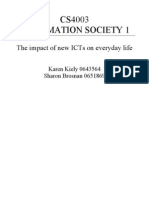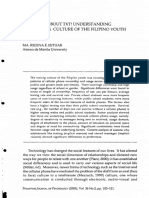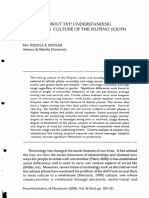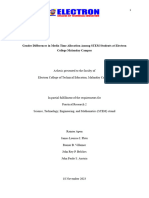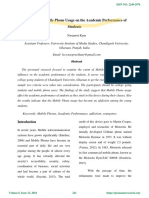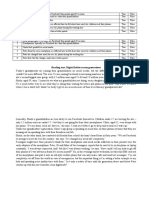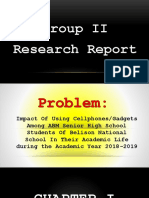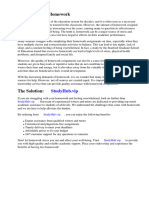0% found this document useful (0 votes)
200 views29 pagesMobile Tech's Impact on Grade 11 Students
This document discusses the impact of mobile technology on the mental, physical, and social behaviors of senior high students at Northeast Luzon Adventist College. It notes that mobile technology usage has increased dramatically worldwide and among youth. Studies show that mobile phones and social media can negatively impact concentration, relationships, and disconnect users from real-world interactions, but can also positively help organize social networks. The document examines research on gender differences in mobile technology usage among youth and the concerns about overreliance on mobile devices for safety and intrusion into young people's lives.
Uploaded by
Shaina Akimah M. DipantarCopyright
© © All Rights Reserved
We take content rights seriously. If you suspect this is your content, claim it here.
Available Formats
Download as DOCX, PDF, TXT or read online on Scribd
0% found this document useful (0 votes)
200 views29 pagesMobile Tech's Impact on Grade 11 Students
This document discusses the impact of mobile technology on the mental, physical, and social behaviors of senior high students at Northeast Luzon Adventist College. It notes that mobile technology usage has increased dramatically worldwide and among youth. Studies show that mobile phones and social media can negatively impact concentration, relationships, and disconnect users from real-world interactions, but can also positively help organize social networks. The document examines research on gender differences in mobile technology usage among youth and the concerns about overreliance on mobile devices for safety and intrusion into young people's lives.
Uploaded by
Shaina Akimah M. DipantarCopyright
© © All Rights Reserved
We take content rights seriously. If you suspect this is your content, claim it here.
Available Formats
Download as DOCX, PDF, TXT or read online on Scribd
/ 29


